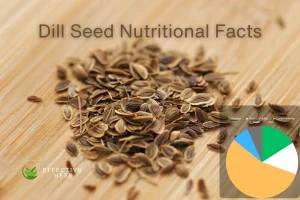Bay Leaf Nutrition Facts
Explore the nutrition facts of bay leaves in this blog post. Bay leaves are aromatic leaves commonly used in cooking for their flavor-enhancing properties. Beyond their culinary uses, bay leaves offer several health benefits and are a source of various nutrients.
Full Nutrient Table
The following nutrition table is based on a 100-gram portion of bay leaves. These leaves are low in calories but contain essential nutrients like vitamin A, vitamin C, and iron. Bay leaves also contain antioxidants and have potential anti-inflammatory properties. Adding bay leaves to your dishes not only enhances the flavor but also provides nutritional value.
| Name | amount | Unit |
|---|---|---|
| Proximates | ||
| Water | 5.44 | g |
| Energy | 313 | kcal |
| Energy | 1310 | kJ |
| Protein | 7.61 | g |
| Total lipid (fat) | 8.36 | g |
| Ash | 3.62 | g |
| Carbohydrates | ||
| Carbohydrate, by difference | 75 | g |
| Fiber, total dietary | 26.3 | g |
| Minerals | ||
| Calcium, Ca | 834 | mg |
| Iron, Fe | 43 | mg |
| Magnesium, Mg | 120 | mg |
| Phosphorus, P | 113 | mg |
| Potassium, K | 529 | mg |
| Sodium, Na | 23 | mg |
| Zinc, Zn | 3.7 | mg |
| Copper, Cu | 0.416 | mg |
| Manganese, Mn | 8.17 | mg |
| Selenium, Se | 2.8 | µg |
| Vitamins and Other Components | ||
| Vitamin C, total ascorbic acid | 46.5 | mg |
| Thiamin | 0.009 | mg |
| Riboflavin | 0.421 | mg |
| Niacin | 2 | mg |
| Vitamin B-6 | 1.74 | mg |
| Folate, total | 180 | µg |
| Folic acid | 0 | µg |
| Folate, food | 180 | µg |
| Folate, DFE | 180 | µg |
| Vitamin B-12 | 0 | µg |
| Vitamin A, RAE | 309 | µg |
| Retinol | 0 | µg |
| Vitamin A, IU | 6180 | IU |
| Vitamin D (D2 + D3), International Units | 0 | IU |
| Vitamin D (D2 + D3) | 0 | µg |
| Lipids | ||
| Fatty acids, total saturated | 2.28 | g |
| SFA 4:0 | 0 | g |
| SFA 6:0 | 0 | g |
| SFA 8:0 | 0.01 | g |
| SFA 10:0 | 0.01 | g |
| SFA 12:0 | 0.53 | g |
| SFA 14:0 | 0.21 | g |
| SFA 16:0 | 1.27 | g |
| SFA 18:0 | 0.16 | g |
| Fatty acids, total monounsaturated | 1.64 | g |
| MUFA 16:1 | 0.14 | g |
| MUFA 18:1 | 1.5 | g |
| MUFA 20:1 | 0 | g |
| MUFA 22:1 | 0 | g |
| Fatty acids, total polyunsaturated | 2.29 | g |
| PUFA 18:2 | 1.24 | g |
| PUFA 18:3 | 1.05 | g |
| PUFA 18:4 | 0 | g |
| PUFA 20:4 | 0 | g |
| PUFA 2:5 n-3 (EPA) | 0 | g |
| PUFA 22:5 n-3 (DPA) | 0 | g |
| PUFA 22:6 n-3 (DHA) | 0 | g |
| Fatty acids, total trans | 0 | g |
| Cholesterol | 0 | mg |
| Amino acids | ||
| Alcohol, ethyl | 0 | g |
| Name | amount | Unit |
Nutritional Charts for bay leaf
Nutrient Composition Pie Chart
This chart shows the proportion of different macronutrients (protein, fat, carbohydrate) and micronutrients (vitamins and minerals) in the food.
Macronutrient Distribution Bar Chart
This chart displays the distribution of macronutrients (protein, fat, carbohydrate) in the food.
Mineral and Vitamin Bar Chart
This chart illustrates the distribution of essential minerals and vitamins in the food.
Conclusion
In conclusion, bay leaf offers a range of nutritional benefits, including anti-inflammatory properties, digestive health support, antioxidant effects, and blood sugar regulation. Incorporating bay leaf into your diet can be a flavorful and healthy addition to your meals. It is important to note that individual dietary needs may vary, and consulting a healthcare professional for personalized advice is always recommended. For more detailed nutritional information, refer to the source.







